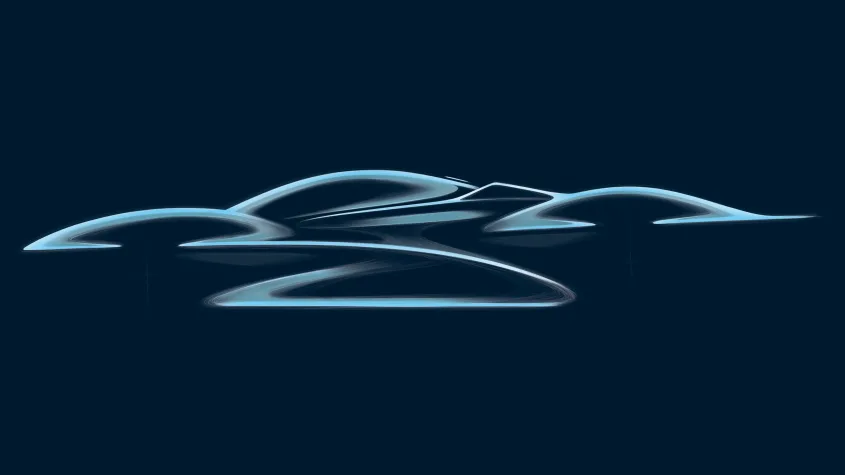Having won two F1 constructors titles in a row, Red Bull is preparing to unveil a track-only hypercar designed by Adrian Newey.
Soon, the Aston Martin Valkyrie won’t be the only Adrian Newey-designed hypercar lighting up race tracks across the globe. Red Bull is developing a new track car called the RB17, and following it’s initial announcement in 2022, F1 team boss Christian Horner revealed to Sky Sports that the project is slated for a full unveiling this year.
Developed in-house by Red Bull Advanced Technologies (RBAT) with an Adrian Newey-penned design, the RB17 will be powered by a turbocharged hybrid V8 developing in the region of 930kW. With no concessions to road regulations, the track-only machine has the potential to push the performance envelope further than the Valkyrie, and potentially even the AMR Pro version.
Red Bull set a target of 900kg for the project, which would make the RB17 lighter than the Valkyrie AMR Pro but 48kg heavier than the GMA T.50s. The cockpit will be closed and have room for a driver and passenger, but will feature a longer wheelbase, larger wheels and tyres, and target an even lower centre of gravity than the Valkyrie. Powering the RB17 will be a twin-turbocharged V8 engine with a hybrid module, which will be produced by an as yet unspecified third party. The engine itself will have 820kW, with an energy recovery system powering an additional 110kW electric motor that will predominantly be used for torque-fill and reducing turbo lag.
Alongside the powertrain, the RB17 will base its aerodynamic package on ground effects – as has been the focus in F1 since 2022. Red Bull has already demonstrated an exceptional understanding of ground effects with the championship winning RB18 and RB19 F1 cars, but the new hypercar will have more tools at its disposal to precisely control underbody airflow and avoid the bouncing phenomenon that plagued Formula 1 at the start of the ground effects era. To function on bumpier track surfaces, flexible skirts will be used in conjunction with an active suspension system, while other banned F1 innovations – such as the blown diffuser – will also be integrated into the technical package.
The car will be predominantly built in-house by Red Bull’s Advanced Technology off-shoot, with only elements like the gear-sets, powertrain and glazing sourced externally. While not set up for mass production, RBAT has a production target of 15 units per year, with no more than 50 to be built in total. The RBAT team, which acts as a consulting firm for the team’s external projects, has been built up over the years to absorb some of the extra personnel no longer able to be employed by the F1 team due to budget cap regulations.
Red Bull has released an initial estimation of price at £5 million (AUD$9.5 million) not including local taxes, likely making the one very expensive toy for those who want the closest thing to an F1 car in the garage possible. And without the complications of trying to make it type-approved for road use, it’s likely that the RB17’s development process has been significantly more straightforward than that of the Valkyrie and Mercedes-AMG One, which both ran into delays and serious technical obstacles.




